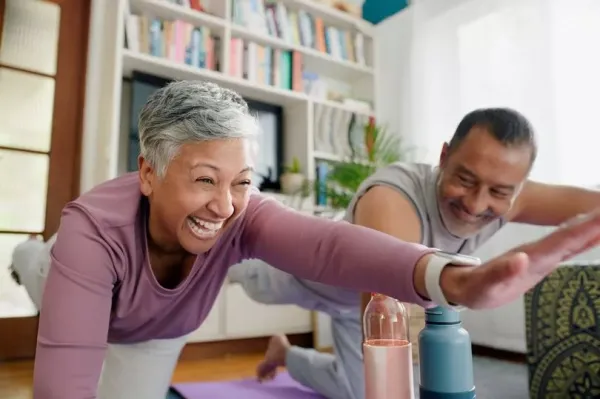
People should take part in two types of exercise regularly now to ensure they stay strong and independent later in life, experts have warned. It is thought we start to lose up to five percent of our strength every year after we reach the age of 40.
This can have a devastating impact on the body over time, leaving us frail and reliant on external support as we get older. However, there are steps we can take to mitigate this - which we should start as soon as possible.
Writing for , Andrew Budson - a lecturer in neurology at Harvard Medical School, explained that many people experience two troubling changes as they age. These are changes in strength, and changes in coordination.
“Changes in strength, swiftness, and stamina with age are all associated with decreasing muscle mass,” he said. “Although there is not much decline in your muscles between ages 20 and 40, after age 40 there can be a decline of one percent to two percent per year in lean body mass and 1.5 percent to five percent per year in strength.”
He warned that muscle fibres can become smaller in old age. If this occurs, the fibres die.
Meanwhile, your coordination can alter due to changes in the brain and nervous system. Andrew continued: “Multiple brain centres need to be, well, coordinated to allow you to do everything from hitting a ball to keeping a coffee cup steady as you walk across a room.

“This means that the wiring of the brain, the so-called white matter that connects the different brain regions, is crucial. Unfortunately, most people in our society over age 60 who eat a Western diet and don't get enough exercise have some tiny ‘ministrokes’ (also called microvascular or small vessel disease) in their white matter.
“Although the strokes are so small that they are not noticeable when they occur, they can disrupt the connections between important brain coordination centres such as the frontal lobe (which directs movements) and the cerebellum (which provides on-the-fly corrections to those movements as needed).” On top of this declining vision can have an impact on your coordination.
How to improve your strength and coordinationHe recommended specific types of exercises to help improve your strength and coordination as you age. Andrew said: “It turns out that one of the most important causes of reduced strength and coordination with ageing is simply reduced levels of physical activity.
“There is a myth in our society that it is fine to do progressively less exercise the older you get. The truth is just the opposite! As you age, it becomes more important to exercise regularly — perhaps even increasing the amount of time you spend exercising to compensate for bodily changes in hormones and other factors that you cannot control.”

Two types of exercise to try include aerobic exercise - which gets your heart rate up, and exercise that helps with strength, balance, and flexibility. You should do these whether you are 18 or 88, he commented.
“Participate in aerobic exercise such as brisk walking, jogging, biking, swimming, or aerobic classes at least 30 minutes per day, five days per week,” Andrew said. “Participate in exercise that helps with strength, balance, and flexibility at least two hours per week, such as yoga, tai chi, Pilates, and isometric weightlifting.”
On top of this he shared the following tips to stay active as you get older: